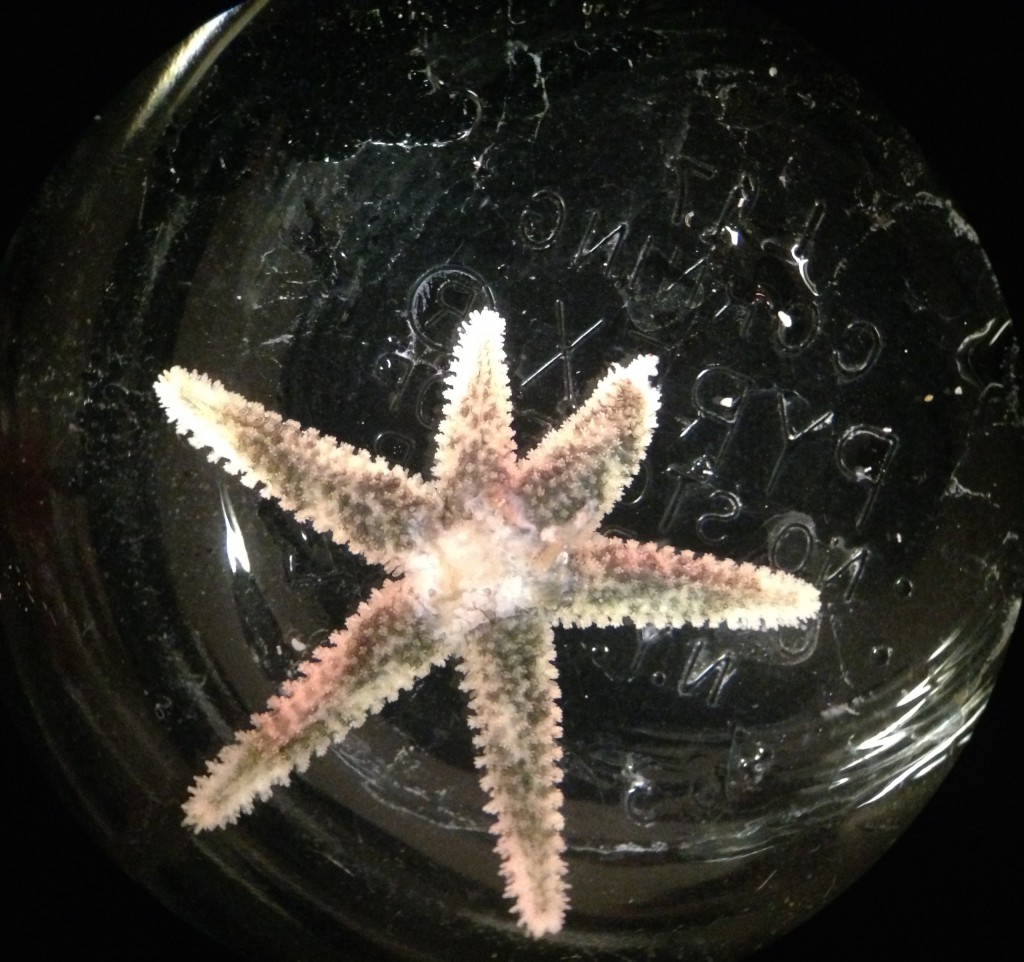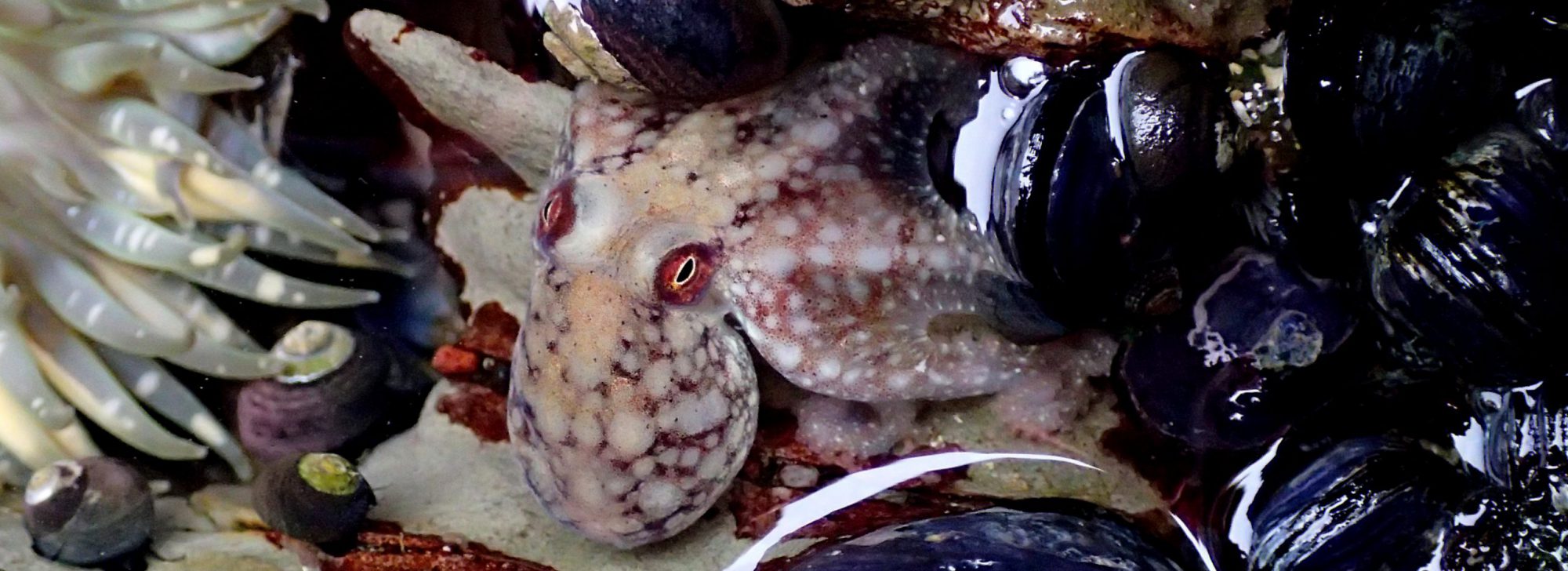Sometimes the only word that will do is a bad word. I generally try not to use a lot of bad language because on the occasions when I do swear I want my f-bombs to really mean something. Late this afternoon I was on my way out of the lab when I made a quick last trip through the wet lab just to make sure everybody would be okay for the night, when out of the corner of my eye I saw a few odd pink bits in one of my screened containers.
This container held three small six-armed stars of the genus Leptasterias. I had collected them earlier this summer with the goal of showing them to my students when we do the echinoderm diversity lab at the end of the semester. Stars in this genus are interesting because their normal arm number is six and they brood their babies instead of broadcasting gametes into the sea to meet, fertilize, and develop on their own. Plus, like all their echinoderm kin, they are pretty animals. Lastly, enamored as I am of oddballs and out-of-the-ordinary things, I am charmed by Leptasterias‘s six arms because most stars have only five.
So when I opened up the screened container and saw that one of my Leptasterias stars had torn itself into pieces, I let fly with a few f-bombs and other choice expletives. I removed the star pieces into a bowl for a better view.

© Allison J. Gong
Seeing a star that had ripped its own arms off is every bit as horrifying when the star has six arms as when it has five. This act of self-mutilation had probably occurred today, as the star looked fine when I checked on it yesterday. All of the pieces were still alive and crawling around:
Actually, if you examined each of the pieces independently and didn’t know that it was only part of a greater whole, you’d think that they were entirely viable. I put these pieces aside in a separate bowl, although honestly I don’t know why. I’m almost certain they’ll be dead when I check on things at the lab tomorrow morning, and even if they aren’t they’ll be decomposing while still sort of alive, which is even worse. I must be a glutton for punishment.
For a while I held out a teensy glimmer of hope that the other two stars might be okay, but that didn’t last long. It took only a glance to see a big aboral lesion on the center of one of them:

© Allison J. Gong
Examination under higher magnification shows just how deep and intrusive these lesions are. The body wall is entirely compromised, resulting in the exposure of internal organs to the outside environment.

© Allison J. Gong
It turns out that none of these Leptasterias is unaffected. The third star in my container has a small aboral lesion:

© Allison J. Gong
Whether or not this third individual will survive is up for grabs, but I wouldn’t bet on it. From my experience with wasting syndrome in Pisaster and Pycnopodia, the disorder progresses extremely rapidly once the animal starts showing signs of illness. And all of these animals appeared just fine yesterday. The small pink star is essentially dead already, it just hasn’t realized it yet. The gray star with the large lesion may very well be dead tomorrow, too. The star with the small lesion might still be alive tomorrow, and this is the only one for which I have a bit of hope for survival.
About a week ago the seawater temperature dropped to 16°C for a few days, but then started creeping back up; today it topped out at 19°C. Correlation is not causation, but I do wonder if another spike in the 19-20° range, on top of stress caused by the ongoing period of warm water, is the proverbial straw that broke the camel’s back. These poor stars have gone through hell lately, and there’s no indication that the water will cool off any time soon. I’d throw up my hands and ask, “What’s next?” but I have a sneaking suspicion that I’ll find out soon enough.
